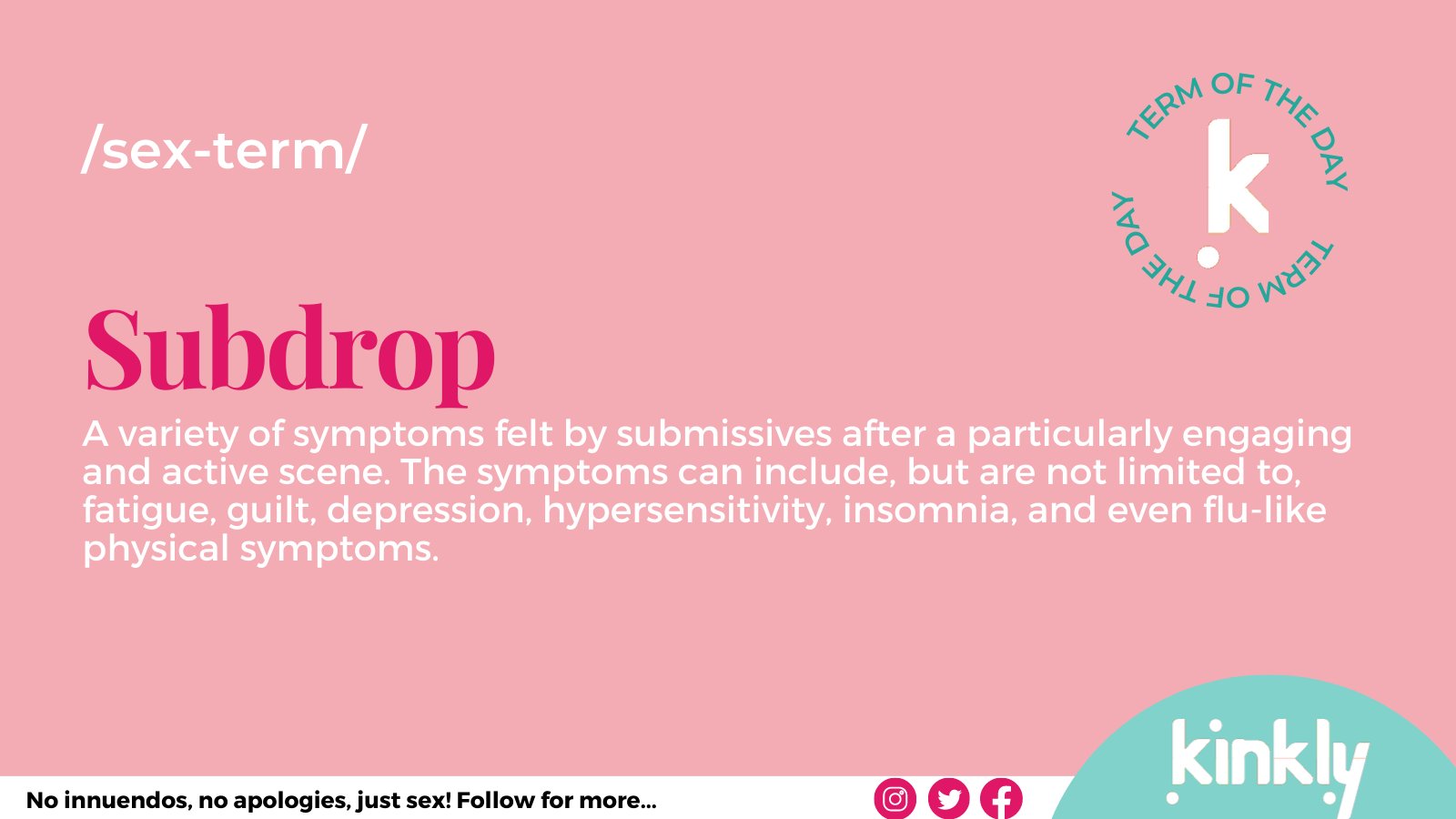Subdrop Explained: Navigating the Emotional Aftermath

Subdrop is a term commonly used in the BDSM community to describe the emotional and physical effects that submissives may experience after a scene or play session. It is important to understand what subdrop is, how it can manifest, and how to effectively manage it to ensure the well-being of all parties involved in BDSM activities.

Credit: dita.com
What is Subdrop?
Subdrop is a phenomenon that can occur after intense BDSM activities, such as bondage, impact play, or sensory deprivation. It is characterized by a range of emotional and physical symptoms that can vary from person to person. Submissives may experience feelings of sadness, vulnerability, anxiety, or detachment after a scene, which can be accompanied by physical symptoms like fatigue, headaches, or muscle soreness.
Causes of Subdrop
Subdrop can be triggered by a variety of factors, including the intensity of the scene, the level of trust between partners, and the emotional vulnerability of the submissive. It can also be influenced by external factors such as stress, fatigue, or pre-existing mental health conditions. Submissives who are new to BDSM or who have experienced past trauma may be more susceptible to subdrop.
Recognizing Subdrop
It is important for both dominants and submissives to recognize the signs of subdrop so that they can address it effectively. Some common indicators of subdrop include:
- Feeling emotionally raw or overwhelmed
- Experiencing mood swings or sudden changes in behavior
- Physical symptoms such as fatigue, headaches, or muscle aches
- Difficulty concentrating or making decisions

Credit: twitter.com
Managing Subdrop
There are several strategies that can help submissives manage subdrop and minimize its impact on their well-being. Communication is key in BDSM relationships, so it is important for submissives to talk to their dominants about how they are feeling and what they need to feel supported. Dominants can provide reassurance, comfort, and aftercare to help submissives navigate the emotional aftermath of a scene.
Self-care is also crucial in managing subdrop. Submissives should prioritize activities that promote relaxation and emotional well-being, such as taking a warm bath, practicing mindfulness, or engaging in creative pursuits. Getting enough rest, staying hydrated, and eating nourishing foods can also help alleviate physical symptoms of subdrop.
Seeking Support
If subdrop persists or becomes overwhelming, it is important to seek support from mental health professionals who are knowledgeable about BDSM and kink-related issues. Therapists can provide guidance, validation, and coping strategies to help submissives navigate the complex emotions that can arise from engaging in BDSM activities.
Frequently Asked Questions
What Are The Symptoms Of Subdrop?
Subdrop symptoms may include mood swings, fatigue, anxiety, and lack of motivation.
How Long Does Subdrop Typically Last?
The duration of subdrop varies for each individual, but it generally lasts a few days.
What Are Some Strategies To Cope With Subdrop?
To cope with subdrop, practice self-care, communicate with partners, and engage in relaxing activities.
Can Subdrop Be Prevented?
While subdrop cannot always be prevented, aftercare and open communication can help minimize its effects.
Conclusion
Subdrop is a common and normal experience for many submissives in the BDSM community. By understanding the causes of subdrop, recognizing the signs, and implementing effective management strategies, submissives can navigate the emotional aftermath of scenes in a healthy and sustainable way. Communication, self-care, and seeking professional support when needed are essential components of managing subdrop and promoting overall well-being in BDSM relationships.





